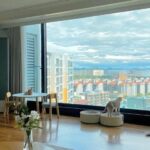Why Are More People Opting for Balcony Enclosures?
– Reduced Space Efficiency
An open balcony can only be utilized for purposes such as gardening, drying clothes, or enjoying the view on pleasant weather days. For the majority of the time, this space remains unused, resulting in wasted area, especially for smaller apartments where maximizing every square meter is crucial.
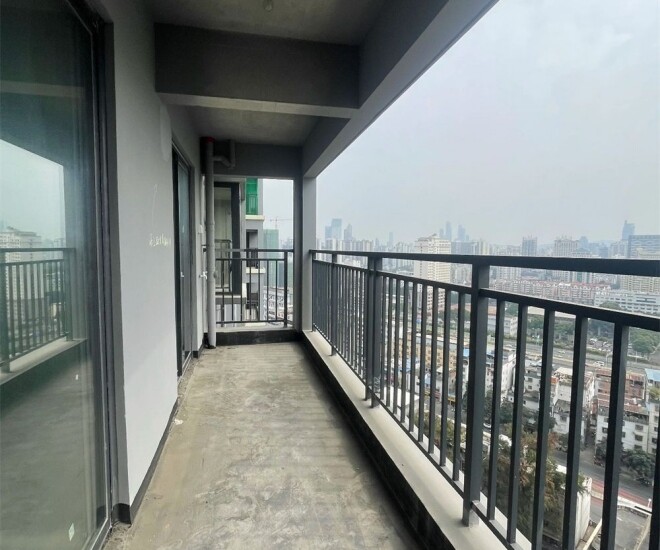
– Poor Sound Insulation
One of the biggest drawbacks of a balcony with railings is its inability to block out noise, especially for apartments near main roads, bus stations, or crowded areas. With an open structure, this type of balcony leaves your home vulnerable to external noise pollution.
Not only does this affect sleep quality, but prolonged exposure to noise can also lead to psychological stress and difficulties in focusing on work or studies. This is a significant concern, given the increasing number of people working from home.
– No Protection from Weather
Balcony railings offer little defense against strong winds, rain, or harsh sunlight, which are common elements in large cities like Hanoi and Ho Chi Minh City.
Consequently, balconies often become damp and moldy, leading to the deterioration of items kept there. This also means that residents cannot comfortably utilize this space throughout the year.

– Dust and Insect Infestation
Another common issue with open balconies is the difficulty in controlling dust and insects, especially in areas near major roads or with high population density. Fine dust particles can easily blow into the living room through the balcony door, and insects such as mosquitoes and flies frequently make their way inside, even in high-rise apartments.
This situation causes inconvenience in daily life and poses potential health risks, especially for families with young children or elderly individuals who are more susceptible to the effects of fine dust and mosquito bites.
– Safety Concerns
Balcony railings, particularly those made of metal, concrete, or glass, typically stand at a height of 1 to 1.2 meters. However, in reality, this height may not provide sufficient safety, especially for families with young children or pets.
Children or pets may climb over the balcony railing or squeeze through gaps, leading to the risk of falling from a significant height. This hazard has been noted on numerous occasions in residential complexes.
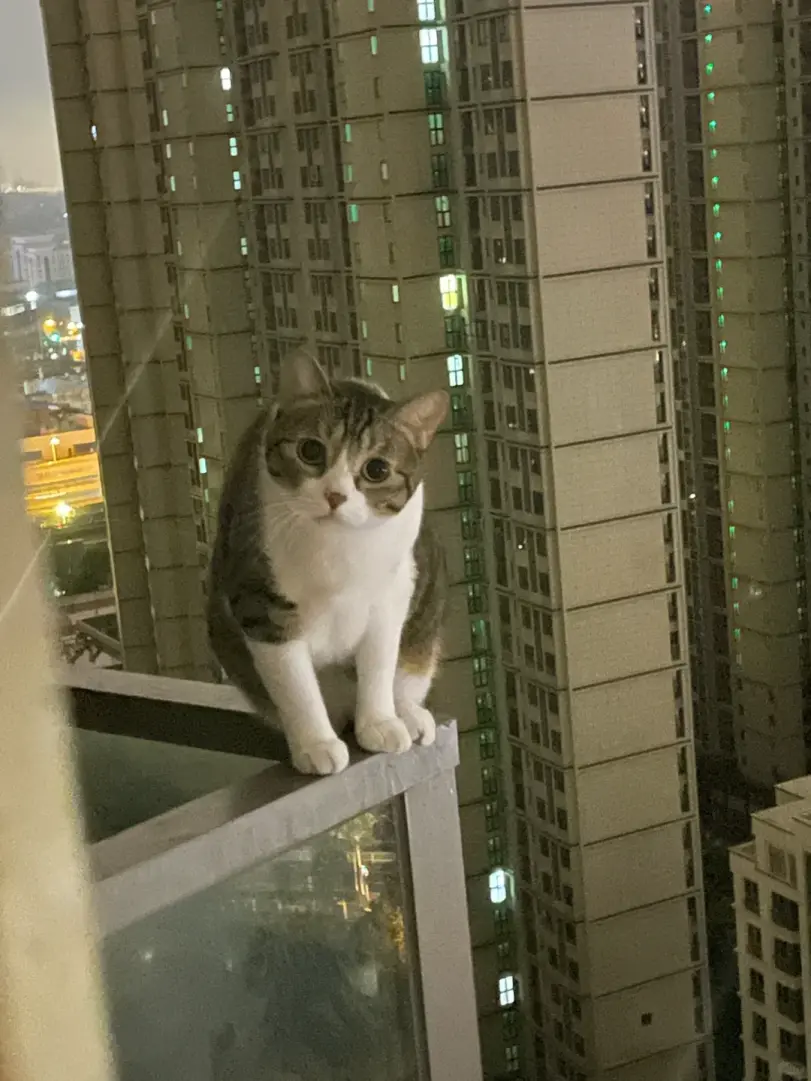
Alternative Balcony Design
More and more people are opting to remove traditional balcony railings and replace them with enclosed designs. Enclosing a balcony not only addresses the aforementioned issues but also increases space efficiency. For homes with small living rooms, enclosing the balcony can provide the illusion of a larger space.
Additionally, it helps conserve energy. Well-insulated windows block cold drafts in winter and keep out the summer heat, reducing the reliance on air conditioning and resulting in lower electricity bills.
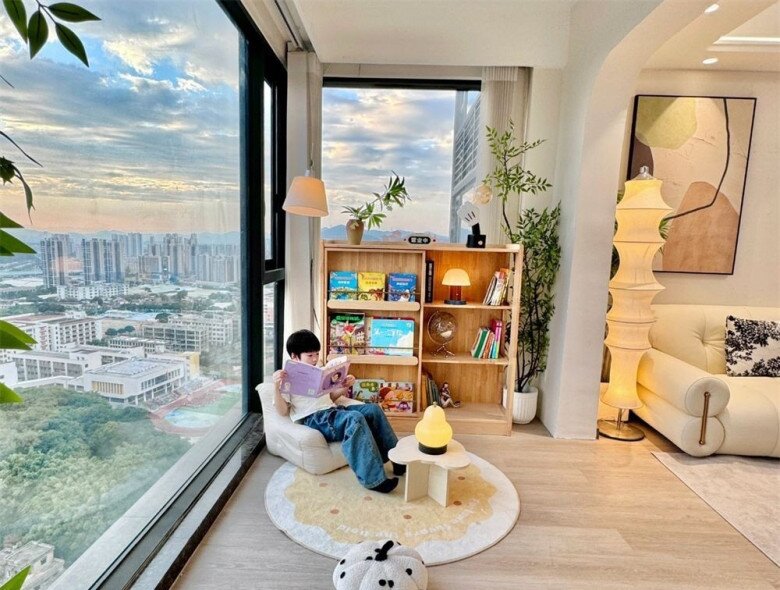
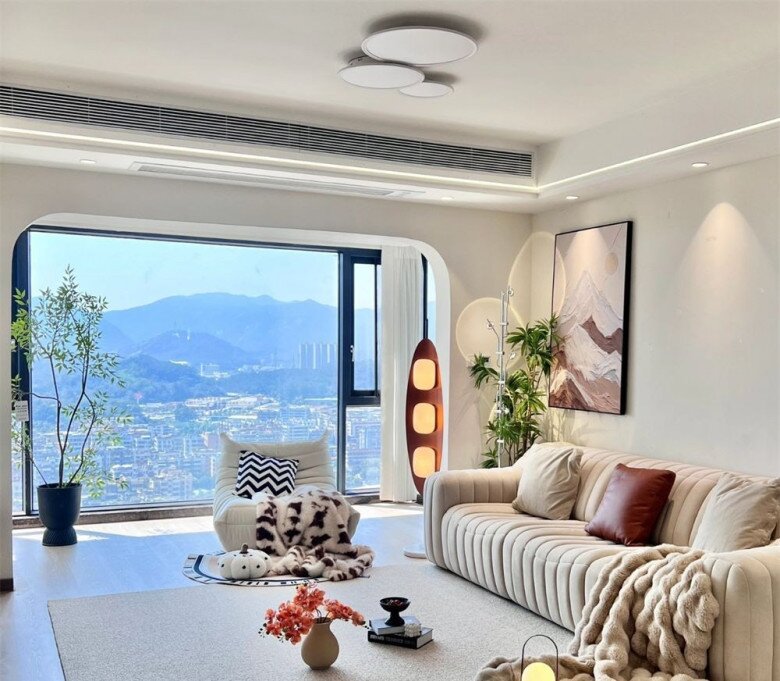
Enclosed Balcony Design.
How to Enclose a Balcony?
If your building management allows it, you have the option to enclose your balcony according to your family’s needs. However, in some cases, the decision to enclose a balcony may not be solely up to the residents but also subject to the regulations and intervention of the management. Here are four suggestions to consider, regardless of whether your building management approves or not:
– Folding Doors
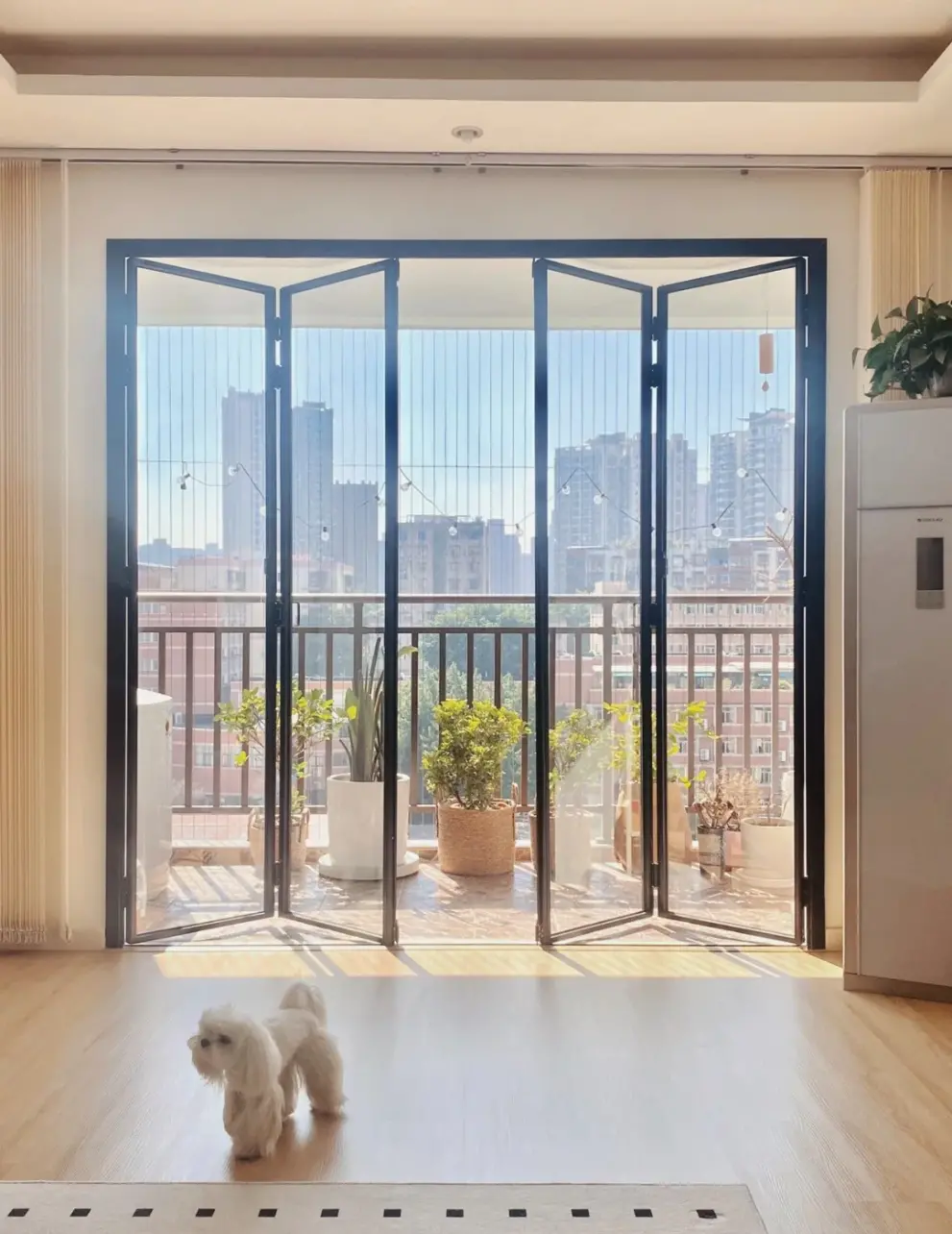
Folding doors are a versatile and aesthetically pleasing option as they can be folded sideways thanks to their hinge design. They can then be pushed to the side, taking up minimal space. This type of door is suitable for various balcony styles, from small to spacious ones.
For smaller apartments, using folding doors to enclose the balcony creates the illusion of a more spacious and airy living room.
During installation, it’s important to plan ahead and leave space for the door frame and columns, ensuring they align with the ceiling. The ceiling should have a recessed groove to conceal the folded portion of the door, enhancing its visual appeal. Additionally, consider the width of the laundry drying rack to prevent collisions with the door when opened.
– Heavy Sliding Doors
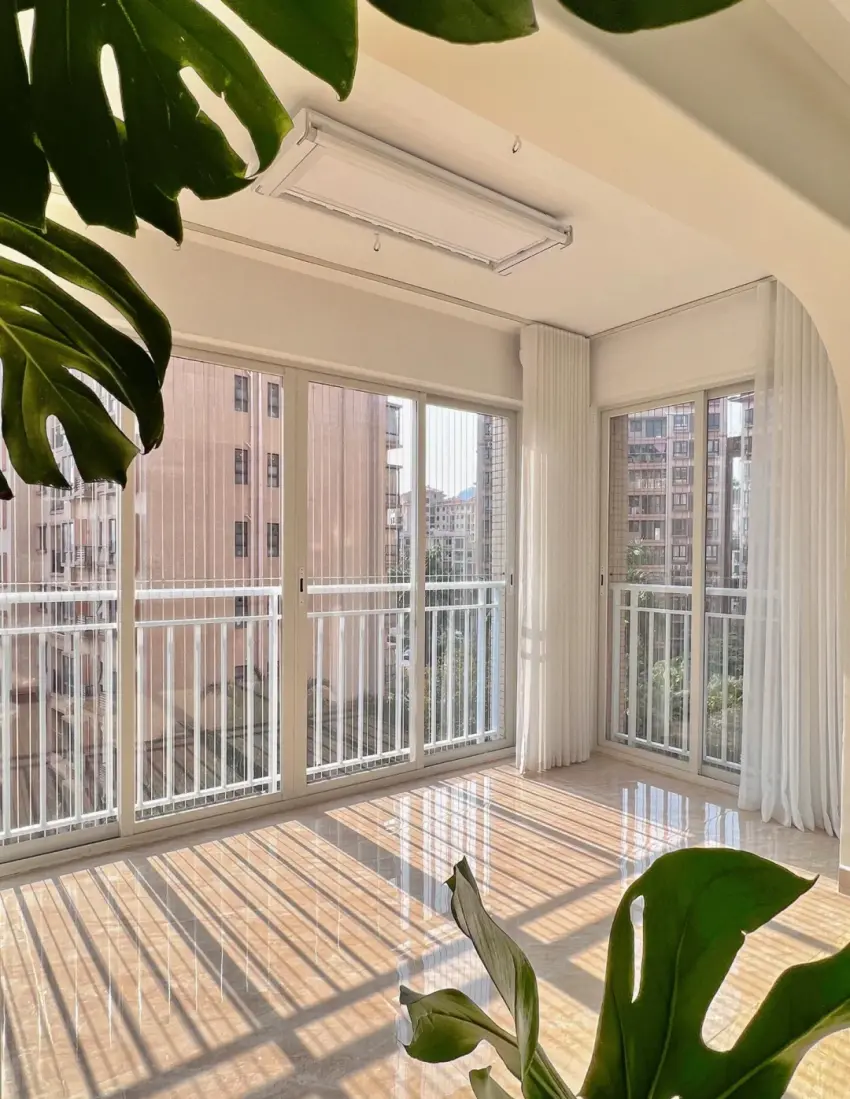
Heavy sliding doors offer a sturdy construction, excellent sound insulation, wind protection, and security, along with integrated safety locks. They are an ideal choice for families with young children.
Enclosing a balcony with these doors brings numerous benefits, including improved ventilation and illumination, protection from wind and rain, and a neat appearance. With a simple slide, you can either enclose the balcony or open it up to create a seamless indoor-outdoor space.
Technical note: For lower floors, a door frame thickness of 1.6 mm is sufficient. For higher floors or areas with strong winds, opt for a thickness of 2.0 mm or more for added safety. Additionally, consider choosing sliding rails with a water drainage function, which facilitates maintenance and effectively channels rainwater away during storms.
– Motorized Wind-Resistant Roller Blinds
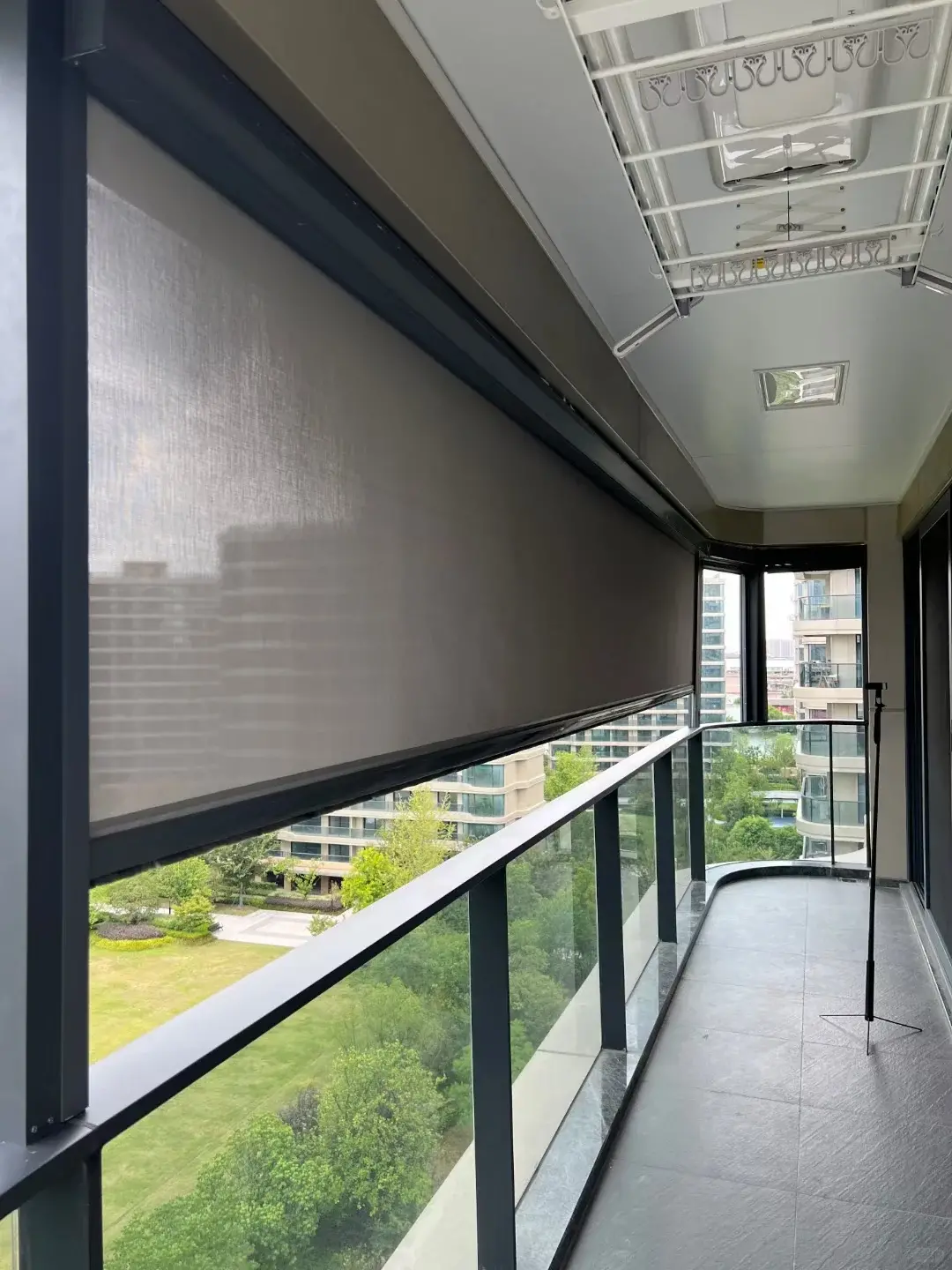
Motorized wind-resistant roller blinds can be operated via a remote control, switch, or smartphone app, offering unparalleled convenience. They are available in a range of colors and light transmission levels.
For condominiums that do not permit construction or enclosure of balconies, roller blinds are an excellent alternative solution. While they don’t provide a complete seal, they offer protection from sunlight, heat, wind, rain, dust, and insects.
Additionally, for families with young children or pets, roller blinds serve as a safety barrier, reducing the risk of falls from the balcony.
– Smart Lift-and-Slide Windows
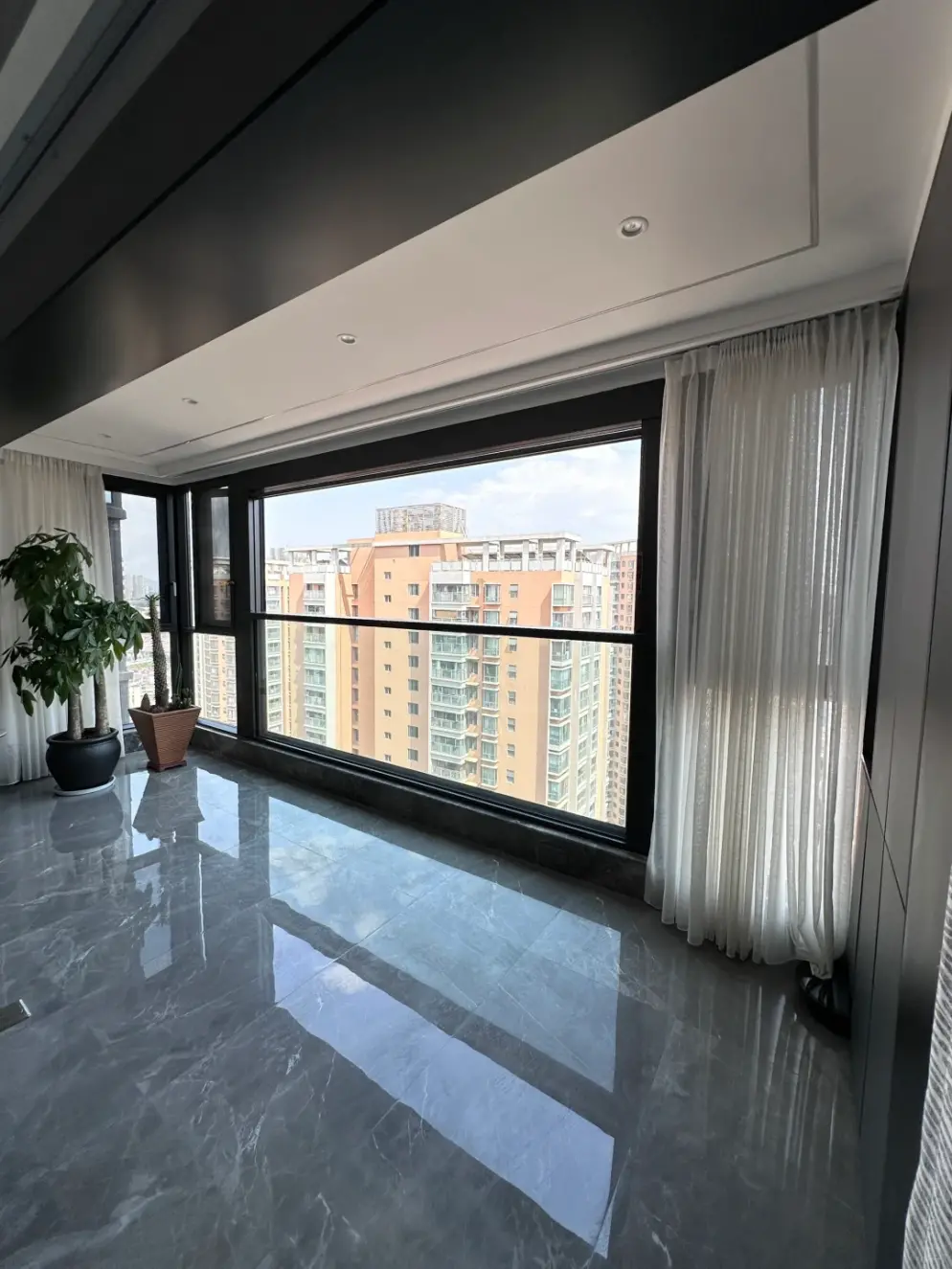
Smart lift-and-slide windows feature a modern design that complements various interior styles. With remote control operation, these windows are ideal for high-rise apartments, eliminating the need for manual handling.
A notable advantage is the built-in safety sensors that detect obstacles or people near the window, automatically stopping its movement to prevent collisions. Additionally, these windows utilize efficient insulating materials and double-glazed glass for superior sound insulation, heat resistance, and energy savings, enhancing indoor comfort.
However, it’s important to note that these windows are generally more expensive than traditional options, and prices can vary significantly depending on the brand, materials, features, and size.




























